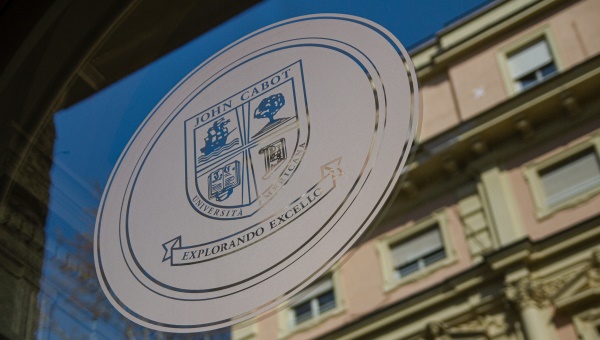Art History Students Present 'Temporal Stabilities': an Online Exhibit by Liz Rideal
On November 20, Art history students and curators Giulia di Fino and Roberta Imperiale, with the support of the Art History Society and the advisor and Art History Professor Inge Hansen, organized an online exhibit of works by artist Liz Rideal. This was JCU’s first online finissage.
“Finissage” is a word invented by Professor Hansen that recalls the vernissage, which is the inauguration of an art exhibition. Every semester, the Art History Society organizes an exhibition to celebrate one artist honored through the vernissage in the middle of the semester. Last semester’s vernissage was dedicated to Liz Rideal’s “Temporal Stabilities,” and since it was not experienced at its best due to the outbreak of the COVID pandemic, Professor Hansen, together with the Art History Society, decided to propose it online in form of an exhibit and discussion. The curators were also assisted by JCU Professor and Coordinator of Studio Art James Gardner who held a lecture about online art galleries, supported by research on digital museums and virtual art tours.
A video about Rideal’s work and the 4m2 gallery opened the event. Liz Rideal showed her works, which consisted of a combination of paintings, photos, and tridimensional objects. “Temporal Stabilities” represents a year-long collaboration between the Slade School of Fine Art (University College, London), The British School at Rome, and John Cabot University. The concept of the works revolves around the ideas of actions, memories, and histories.
After Rideal showed her project, British painter and recipient of the Sainsbury Scholarship at the British School at Rome from 2002 to 2004 Geoff Uglow took the floor. Uglow complimented Liz Rideal for her works and for her ability to combine art and history in a very unique way. He also described 4m2 gallery as a “living space.” Indeed, the art gallery at John Cabot is both a gallery and a library where students can study. Therefore, Uglow thinks that even though the space may not seem like the “perfect gallery space,” it is a living space where people are able to “absorb” the art.
Lastly, the Assistant Director of Humanities and Social Sciences at the British School at Rome, Dr. Harriet O’Neill, praised the collaboration that gave life to “Temporal Stabilities,” acclaiming Liz Rideal’s determination, courage, and work and praising the passion that the JCU Art History Society put into this project.
Previous 4m2 art gallery curators, Viviana Calvagno and Misha Lezzi, talked about their experience working with Rideal before the lockdown, the need to communicate her message in the unique space of the gallery, and the desire to share Rideal’s works with the community.
The event was followed by a Q&A where students had the opportunity to ask Liz Rideal questions about her project. During the Q&A, Rideal revealed that even though technology allows us to experience art by overcoming the obstacles of time and space, it is not the best option for those who are interested in seeing the art in person. The new curators Roberta Imperiale and Giulia di Fino agreed with Rideal’s words. However, they added that, even though a physical exhibition is more impactful and significant, the online finissage represented a good alternative to still enjoy art as a community.






